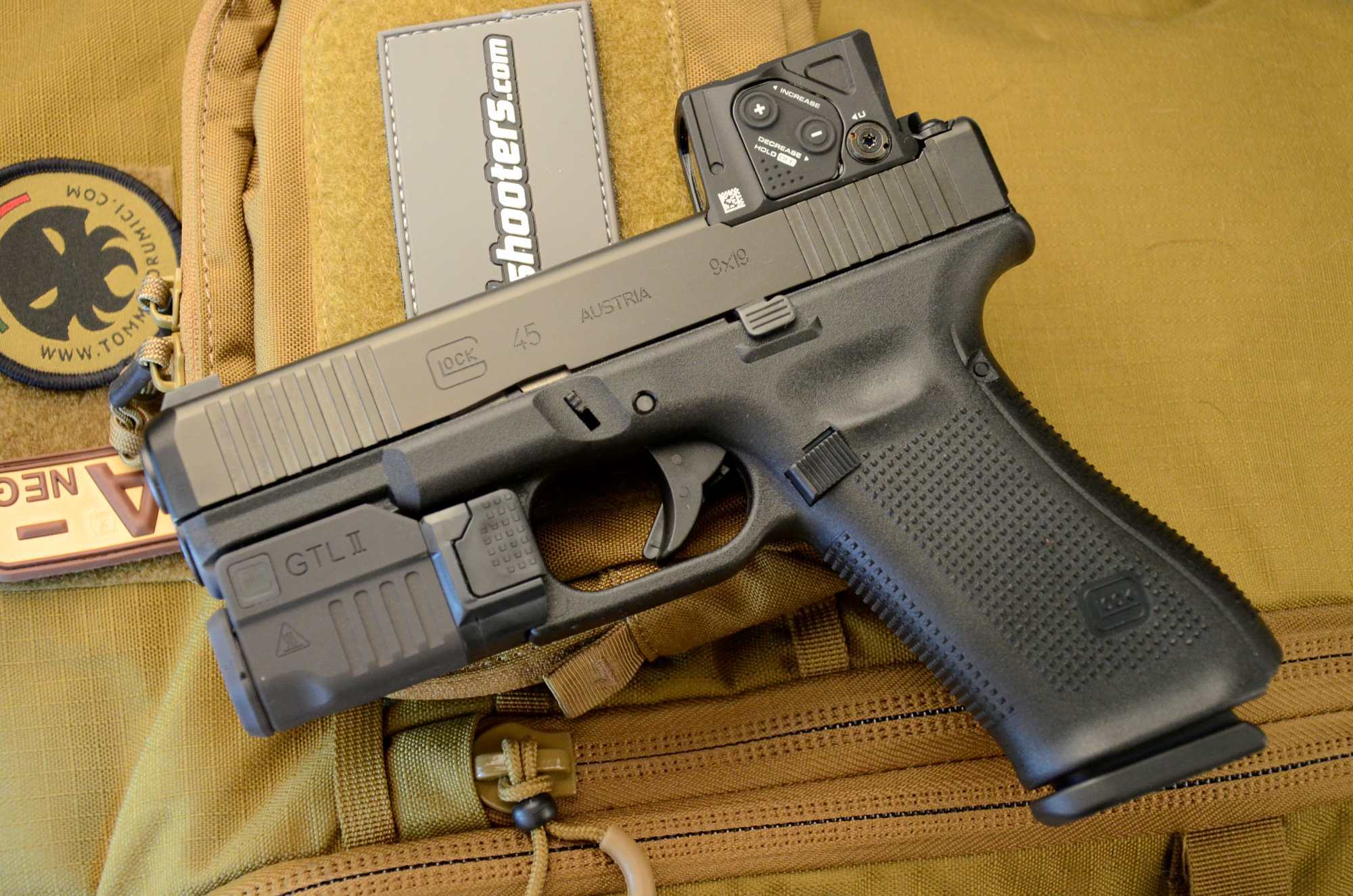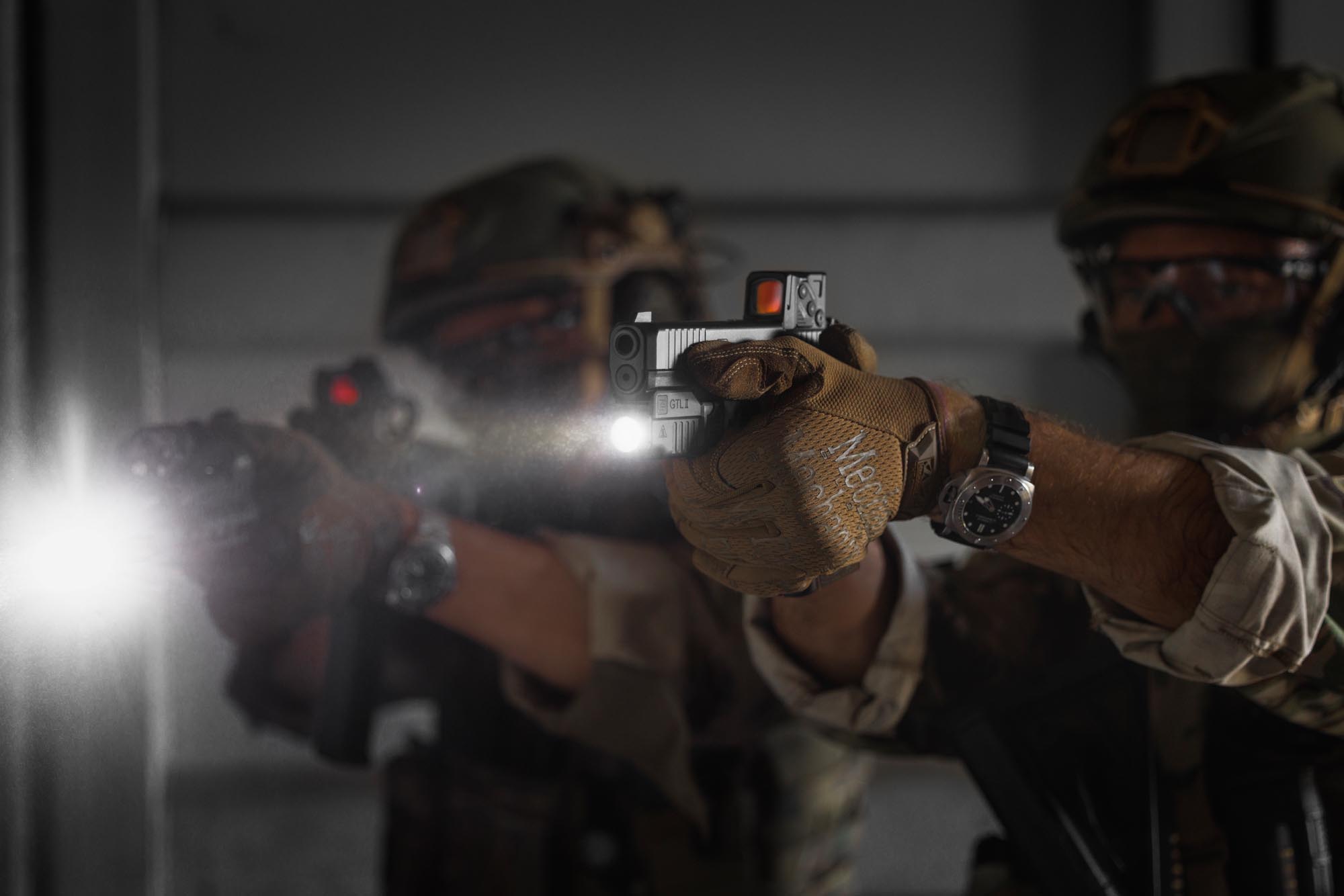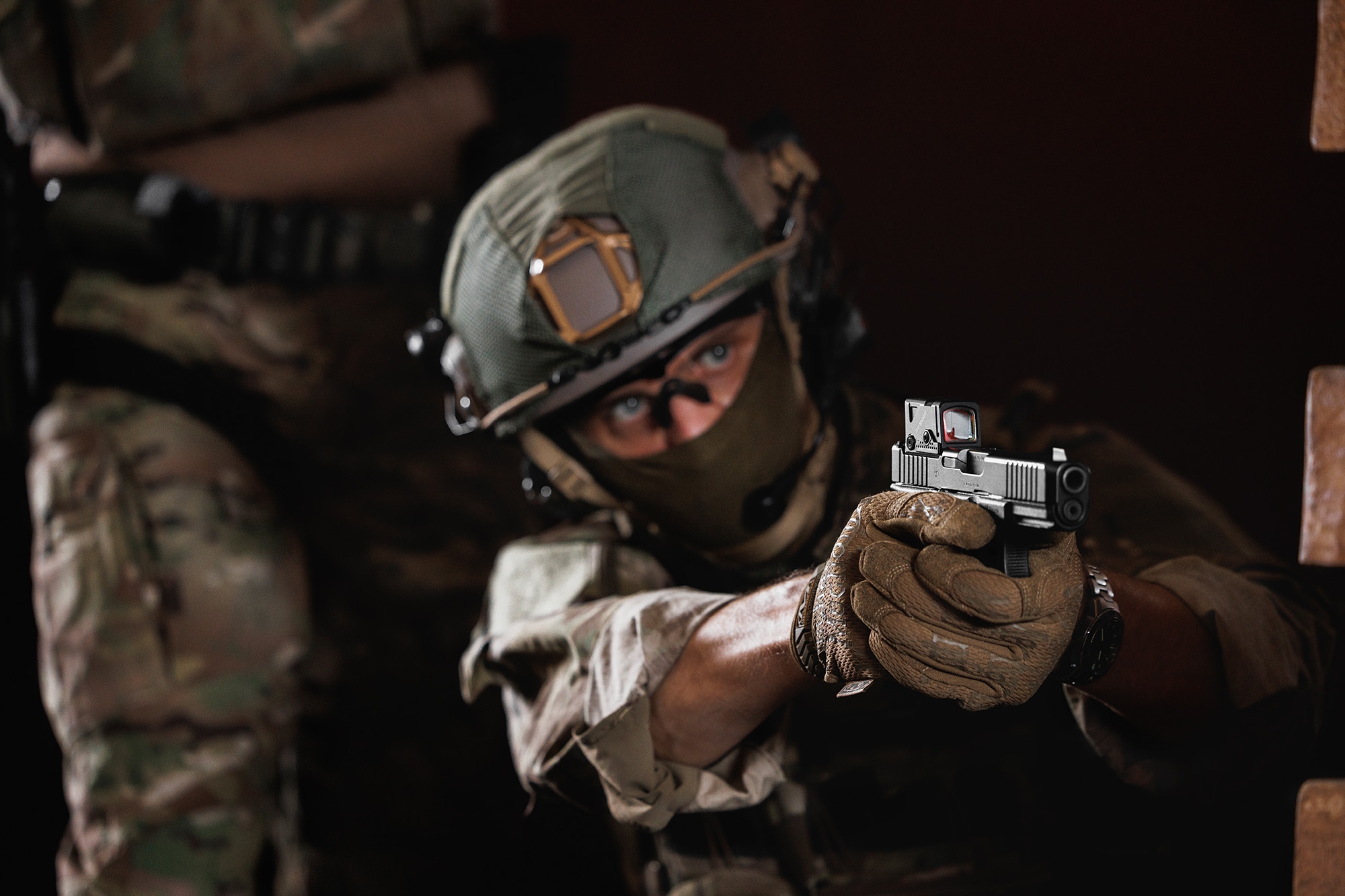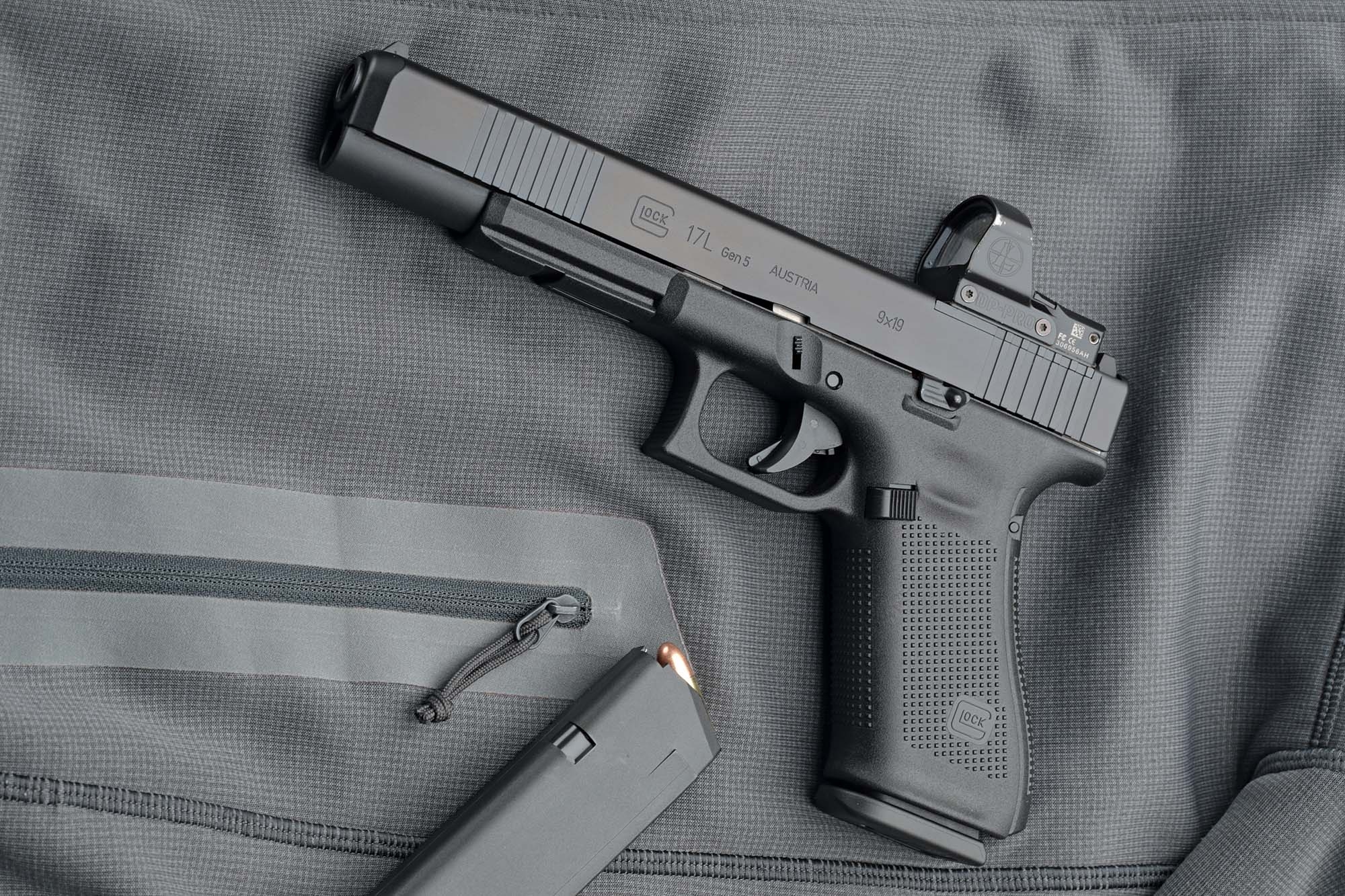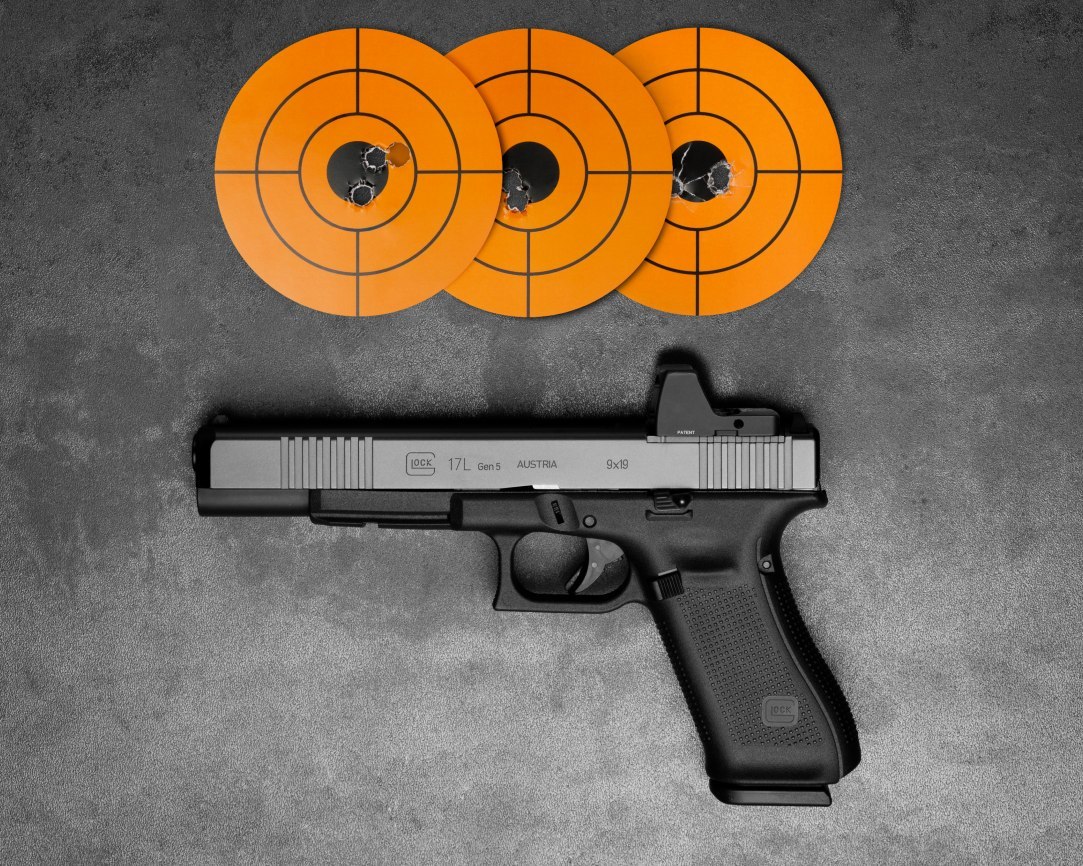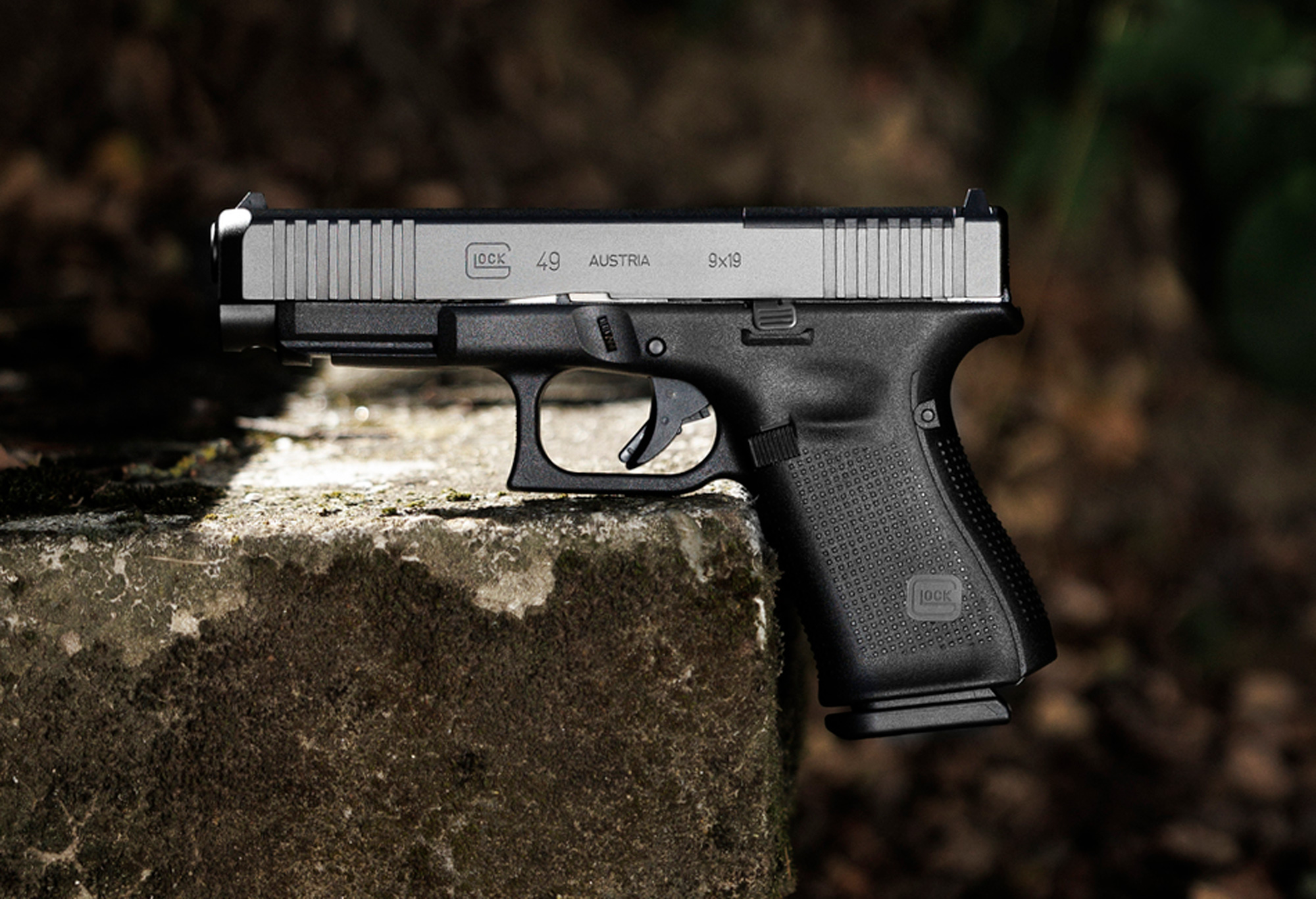When 34-year old Austrian Gaston Glock, a chemical engineer, started his business in 1963, no one imagined that one day he would be counted among geniuses of firearm design of the like of John Moses Browning and Samuel Colt – people who changed the gun world forever. On the contrary, in the mid-1970s ”GLOCK“ was still just a small company specializing in the manufacturing of molded polymer and sheet metal items. Among its most popular products were quite mundane everyday items, such as curtain rods. But its founder was always looking for new business outlets, and when he learned in 1976 that the Austrian army had floated a tender for a knife/bayonet that could be used on the newly adopted Steyr AUG assault rifle, he decided to submit his offer.
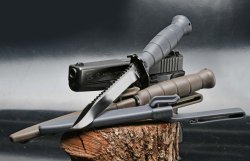
Developed in close cooperation with the Austrian Special Forces, the GLOCK knife was a masterpiece of essentiality, featuring a 165-millimeter-long, 5-millimeter-thick blade made of spring steel hardened to 55 HRC and phosphated, with a polymer handle and one-piece molded sheath. The effective simplicity of Glock's design paid off: the knife, renamed the Feldmesser FM 78, was officially adopted by the Austrian army, which immediately ordered 25,000 pieces. Apparently, Gaston Glock and his first wife, unprepared to the logistical dimensions of victory, spent late nights printing handles to meet the terms of the order.
The adoption of the FM 78 knife was crucial to the fate of the GLOCK brand. Once he got a foot in the door of military contracting, the wily Gaston also won contracts to manufacture machine gun belt links and practice grenade casings. More was to come.
The legendary P80 pistol, aka G17: how a legend was born
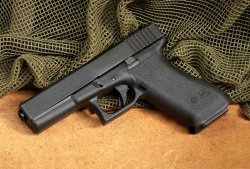
At the beginning of the 1980s, the Austrian Ministry of Defense issued a call for tenders for a new 9 mm service pistol. The requirements for the new handgun included a high-capacity magazine, low weight, high reliability and ease of use. Gaston Glock recognized his opportunity here, and together with a small group of capable design-engineers took a close look at the pistols already on the market. To this end, he had also founded GLOCK Ges.m.b.H in 1980. According to anecdotes, he worked on his pistol nightly in his basement and test-fired it with his left hand so if it blew up, he could still draw a blueprint with his right. After several intense months of study and testing, on April 30, 1981 he finished with his trials and applied for the patent. Since it was the 17th patent of the company, the new pistol was named the GLOCK 17. A legend was born.
On October 29, 1982 , the innovative GLOCK pistol finally emerged as the winner of the Austrian Army tender. It had outperformed all its competitors, and under the official designation “Pistole 80”, or P80 for short, 25,000 pistols were delivered to the Austrian Army between 1982 and 1984. Austria was too small for GLOCK, however, and after passing NATO durability tests, the G17 was selected by the Norwegian Army as their standard sidearm. Shortly after, Sweden and the Netherlands also switched to the new gun. Then, in November 1985, the company opened its U.S. headquarters in Smyrna, Georgia. The world journey had begun: by 1992, just ten years after the adoption by the Austrian Army, some 350,000 pistols had been sold in more than 45 countries. Not just to the military, but to law enforcement acencies too. “First They Fired Us. Then They Hired Us,” said a GLOCK ad in 1995: by 2013, about 65% of all police departments in the U.S. relied on one of GLOCK’s various models that, in the meantime, had been developed in different sizes and calibers.
GLOCK: the reasons behind the success of Gaston Glock and his pistol
Now in its fifth generation, and despite some occasional failures – such as in the U.S. Army's Modular Handgun System competition – the G17 and its siblings were, and still are, hugely successful all over the world.
How could a man who had never designed a gun before create such a perfect firearm, now a real benchmark for any modern pistol?
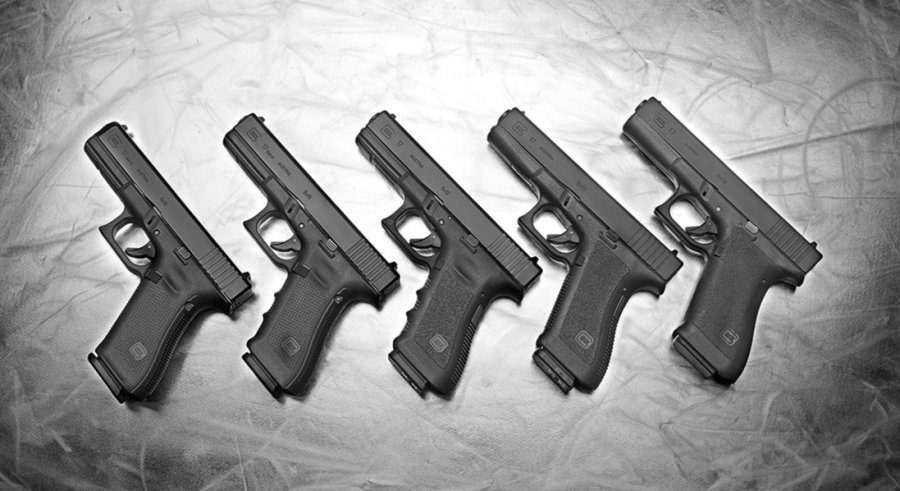
Gaston Glock was not the first one to use a polymer frame (that was Heckler & Koch with the innovative yet not-so-fortunate VP70 in 1970); he did not invent the striker-fired action either (the Borchardt C93 already featured it in 1893); as for the locking system, he chose the well-known and proven Browning-Petter-SIG one. Rather, the brilliance of Gaston Glock lay in selecting the best features and solutions already available, and cleverly combine or develop them with uncompromising quality in a reliable industrial design, inexpensive to make and simple to use. "That I knew nothing was my advantage," he used to say. Was he standing on the shoulders of giants? Maybe. But he also understood, that reliability resides in simplicity, and therefore designed his pistol with as few parts as possible, minimizing complexity: the original G17 had 32 components altogether, while a modern GLOCK pistol is made from an average of only 35 parts. And the partially pre-cocked "Safe Action" trigger, with the safety integrated in the trigger blade as well internal automatic drop and striker safeties, requires no manually operated safety.
It was not easy nor smooth, however. Gaston Glock had to break down many prejudices, for example about the durability of the material polymer in firearms. While popularizing the brand, mainstream media and Hollywood also falsely rumored that his “plastic gun” was a terrorist's weapon because it was not clearly recognizable at airport controls. In addition, as a newcomer from Europe, the company had to assert itself in the patriotically-minded USA against long-established companies such as Colt, Ruger and Smith & Wesson.
Gaston Glock’s personal life
Even his personal life was not so serene: in July 1999, Charles Ewert, one of Glock's closest financial advisers who had been embezzling funds, hired a hit man to kill him using a rubber mallet to simulate an accident. Glock, at that time already 70 years old, had to fight for his life and survived, but was seriously injured. Plausibly one of the most dramatic and shocking experiences that can be imagined, it made an already private man even more taciturn and secretive.
Yet, at the end of the day, Gaston Glock succeeded: he revolutionized the world of small arms forever. GLOCK pistols are used and appreciated worldwide, and today his name is known even to laymen as a synonym for semi-automatic pistols. From this point of view, he was the last of the giants in the gun world. If in heaven (or in hell, if you would ask his enemies) there is a place reserved for such geniuses. He truly deserves it.



